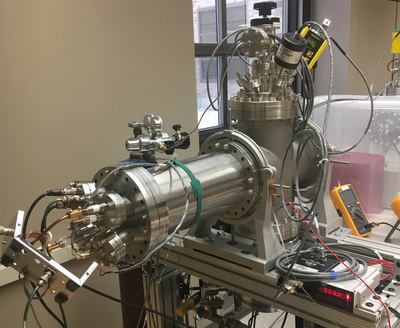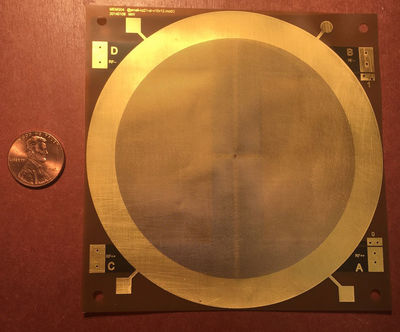RF-Carpet Testing Facility
With the incoming emergence of new radioactive ion beam facilities worldwide including the Facility for Rare Isotope Beams (FRIB) at Michigan State University, there is a high potential for answering pressing questions ranging from the creation of heavy nuclei to the structure of exotic nuclei. Among the two major types of production methods: the ISOL and the in-flight, the chemistry-independent nature of the later method allows for the production of a broader range of nuclei. At first look, the high energy and momentum spread of the produced beams seem to be at odds with the requirements for low energy experiments such as high precision mass measurements and laser spectroscopy. Fortunately, the development of gas cells bridged the gap. While these gas cells vary in design, a common feature of many of them is the use of so-called radio-frequency (RF) carpets. RF carpets can take various forms from copper rings with a rigid or semi-rigid backing to individual electrodes spaced by ceramic insulators. These various configurations all serve the dual purpose of repelling the ions from the cell side or front walls and transporting the ions towards an extraction orifice.
There are currently two methods for transporting the ions in the gas volumes: the traditional method, for which a static electric potential of decreasing strength is applied on the individual electrodes, and the ion surfing method, which replaces this potential by a traveling wave. The common feature of both methods is the application of a radio frequency on the carpet electrodes to provide a repelling force. The ion motion above the carpet and the stability conditions for that motion were investigated leading to a theoretical description of the maximal force on an ion that an RF carpet can balance. The nature of the force can either be desired (like a drag field moving the ion towards or along the carpet) or not (as in the induced ionization of the buffer gas).
In both situations, a detailed knowledge of the parameters that lead to a maximized repelling force is desirable for both an optimal operation and design of RF carpets. Hence, considering the growing use of RF carpet technology, we developed an off-line RF carpet test stand to not only investigate experimentally the behavior of the repelling force as a function of various experimental parameters but also possible future transport methods.

